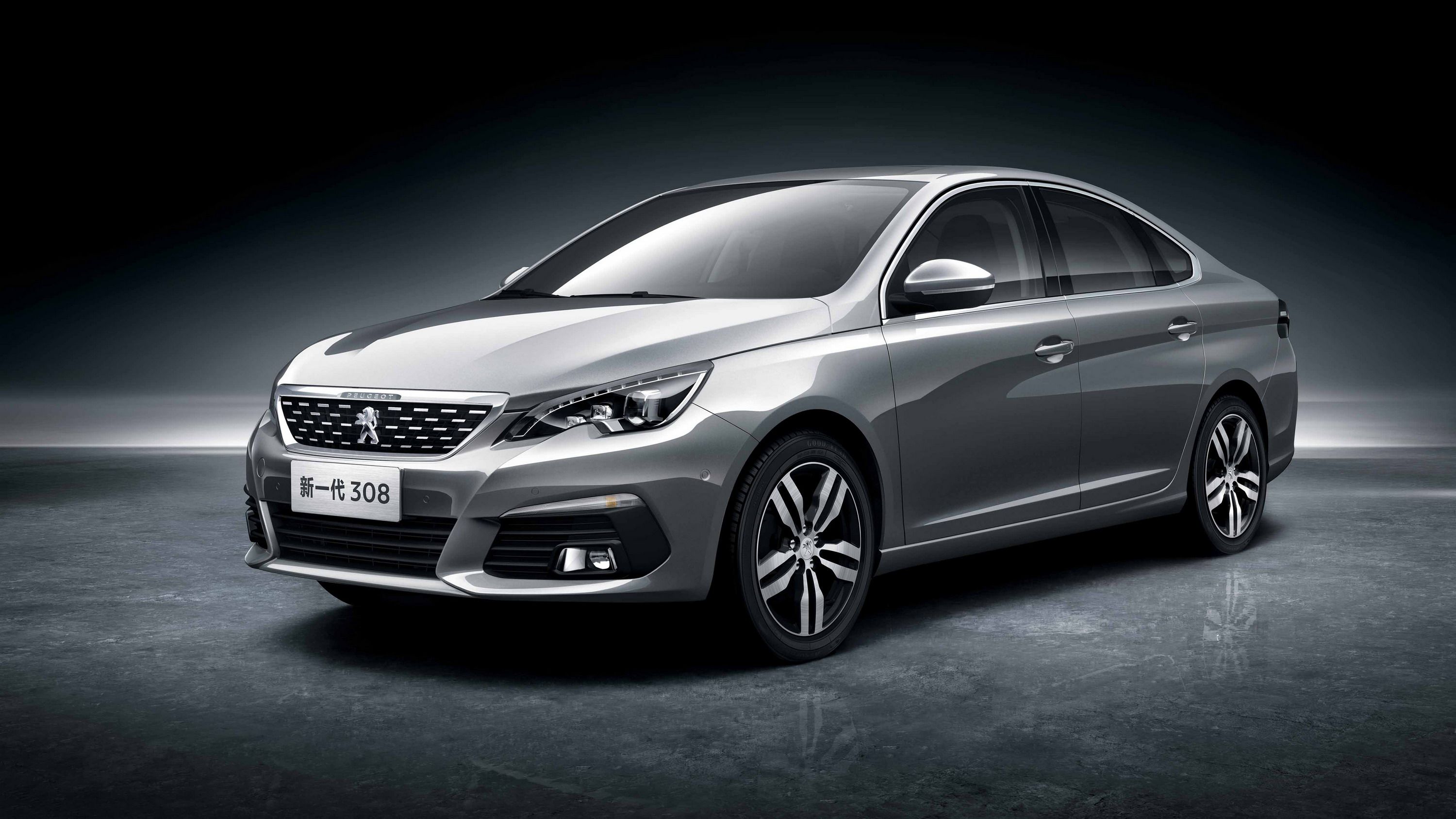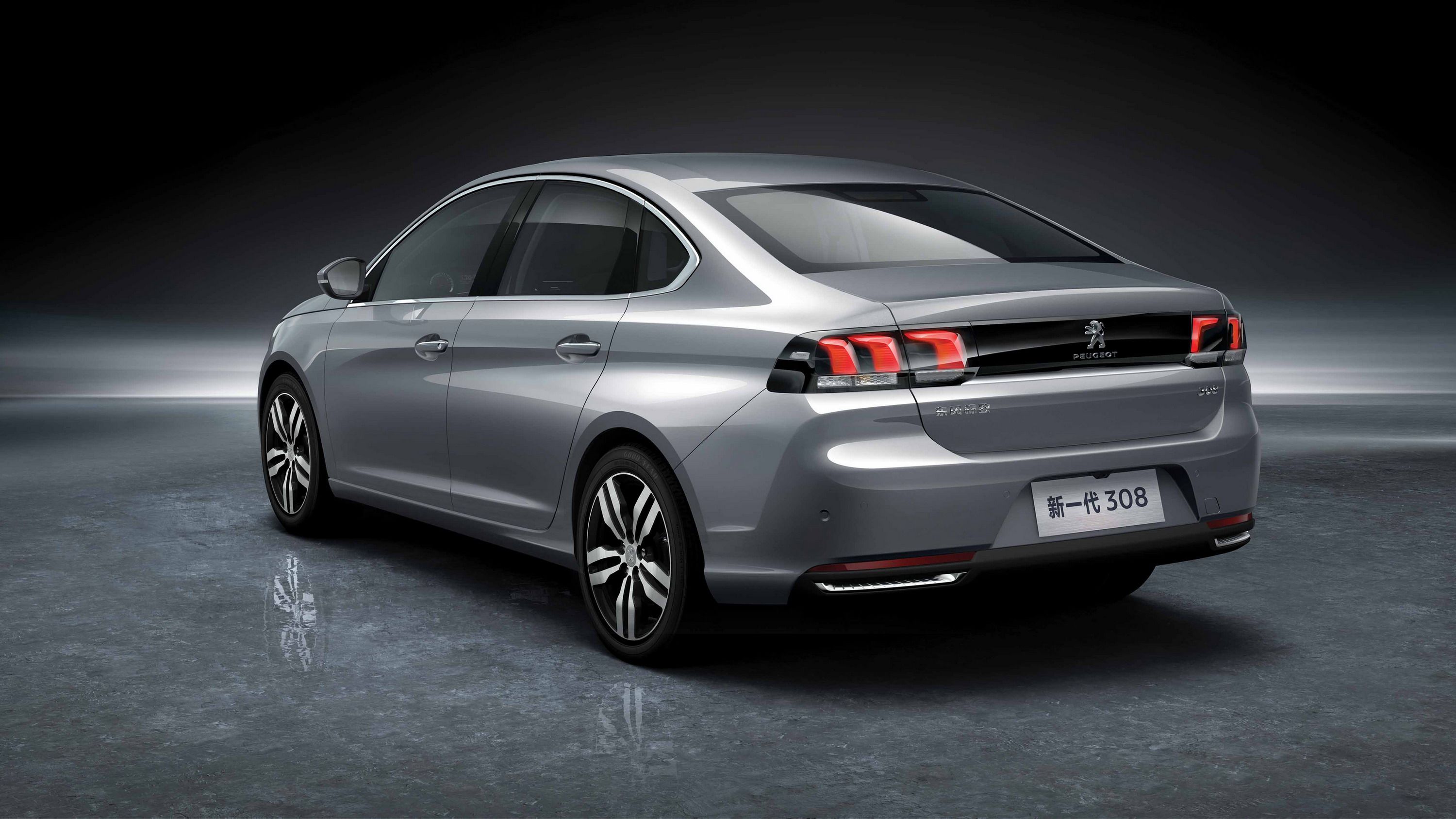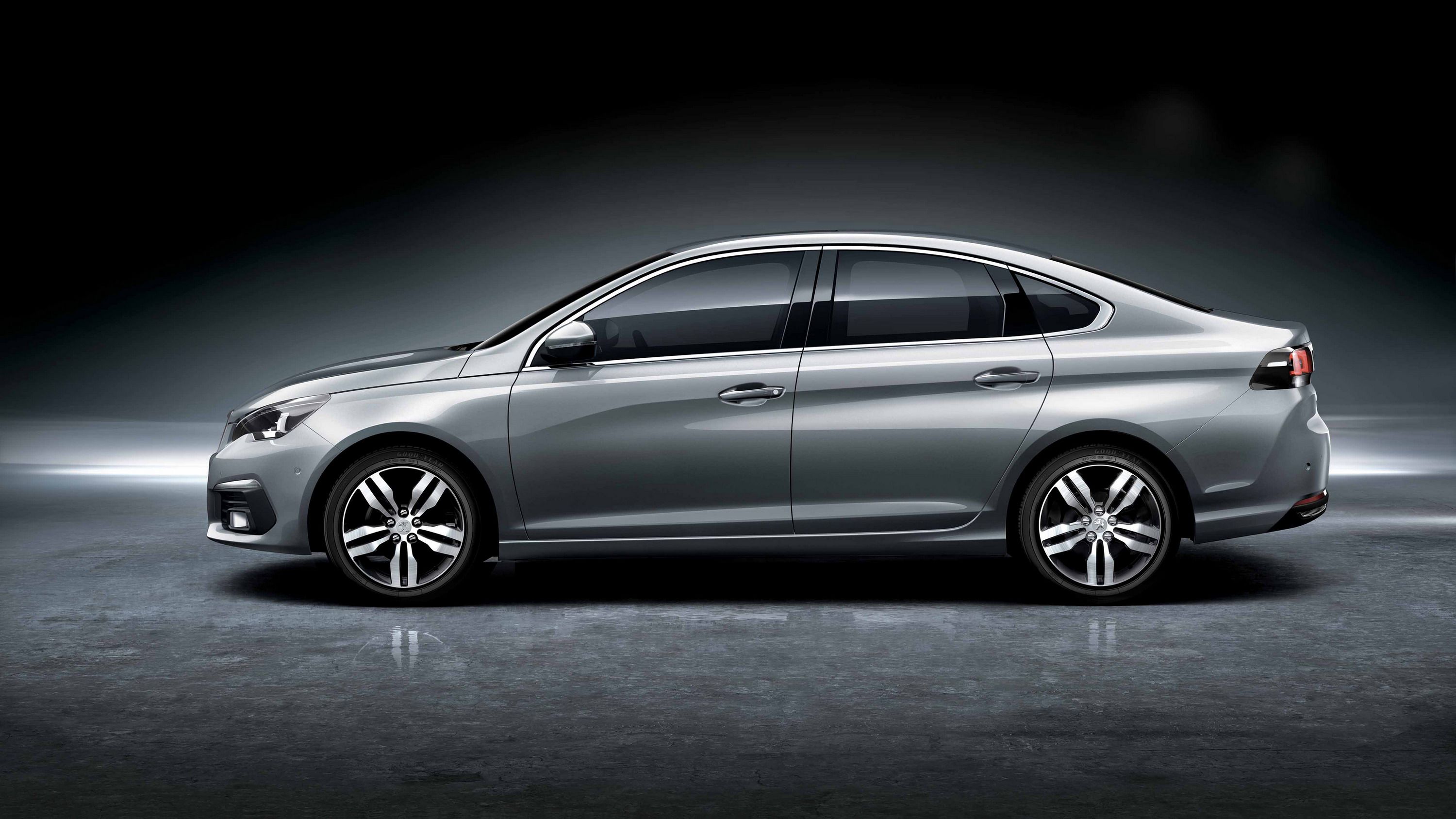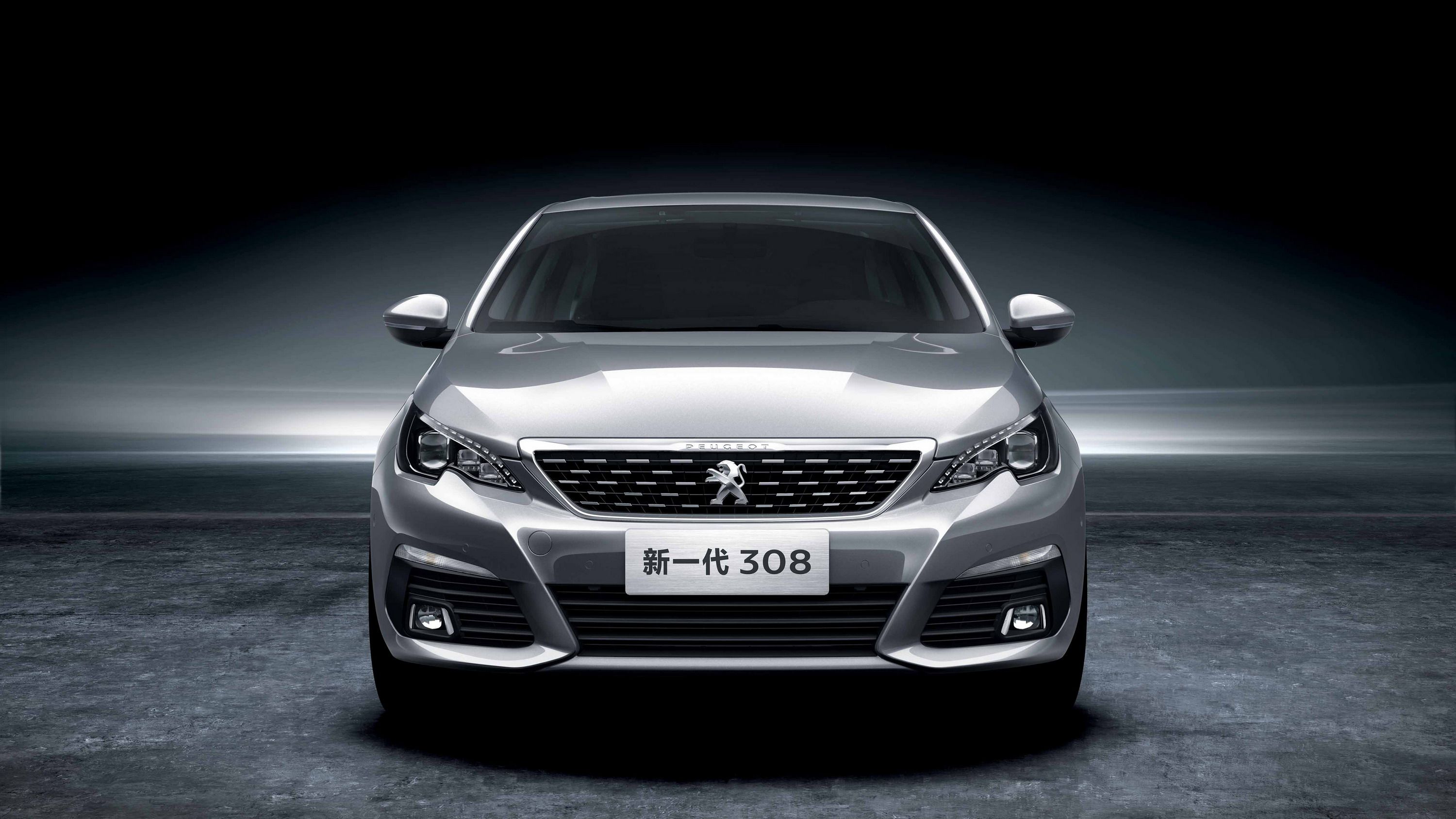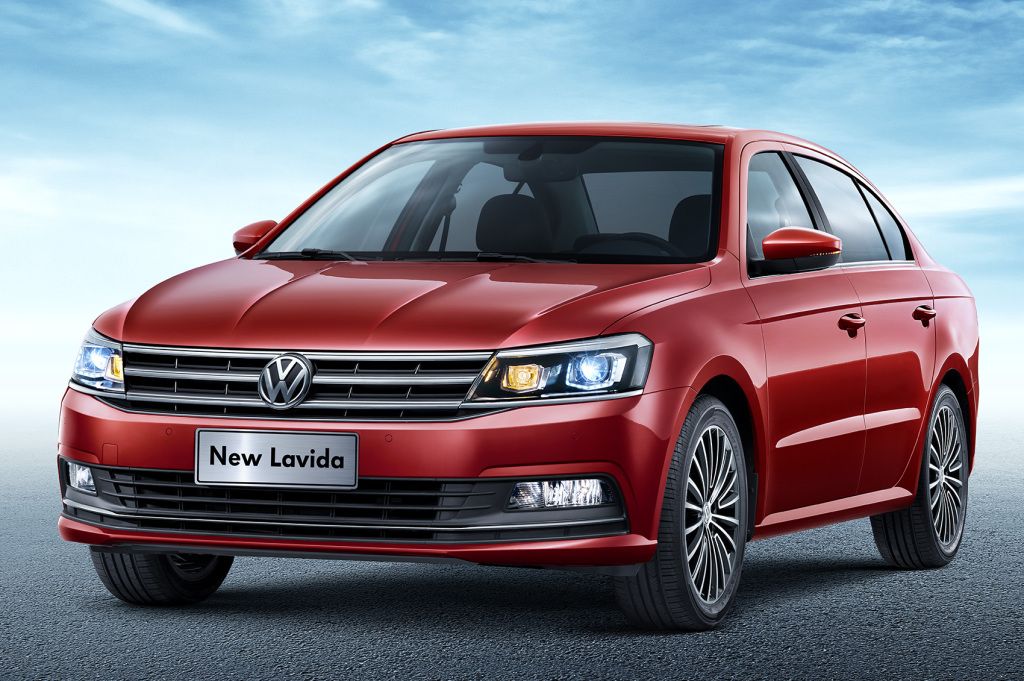It's been three years since Peugeot->ke68 launched the second-generation 308,->ke2264 and the French compact has received a new body style. Following the release of the five-door hatchback->ke304 and the station wagon,->ke143 Peugeot is now offering a sedan->ke142 version of the 308. There is a catch, however. Much like the 307->ke1273 before it, the 308 sedan is not intended for global use and was developed for the Chinese market only. It replaces the first-gen 308 and joins the 408,->ke3189 a long-wheelbase version of the 308 hatchback.
Part of PSA Group's "China: Blue Upper" five-year development plan, the 308 sedan was co-developed with Dongfeng, PSA's partner in China. Not only is it radically different than the model it replaces as far as styling goes, the 308 also rides on a new platform. Whereas the dated 307 and previous 308 used the PSA PF2 underpinnings, the 308 sedan rides on the same PSA EMP2 platform that Peugeot introduced for the Euro-spec hatchback model back in 2013.
Details about the 308 sedan's features and drivetrains are still scant of this writing, but Peugeot hopes that the new compact will help it ascend among the top 10 most sold brands in China, the world's largest automobile market. Alongside the China-spec 3008,->ke3041 the 308 sedan will be Peugeot's future core product in the Asian country and the car the French hope it will bring most new customers to the brand.
Continue reading to learn more about the Peugeot 308.
2016 Peugeot 308 Sedan
- Make: Array
- Model: 2016 Peugeot 308 Sedan
- Engine/Motor: inline-4
- Horsepower: 115
- Torque: 111
- Transmission: five-speed manual
- [do not use] Vehicle Model: Array
Exterior
Styling-wise, the Chinese sedan borrows heavily from the Euro-spec hatchback, but it has plenty of features to help it stand out. Up front, the headlamps, the grille, and the engine hood are identical to the hatchback's, but the bumper features a different three-piece grille layout with larger outlets on the sides. The apron is also different and employs a splitter-like element, giving the sedan a sporty look. Just like the 308 GTi and the newly launched 2008 crossover, the lion emblem has been moved from the engine hood to the grille, while the latter also received chrome inserts instead of the previous horizontal slats.
The side panels have remained unchanged from the nose toward the C-pillars, but the rear quarters have been altered for the three-box design. Naturally, the 308 Sedan sports a traditional trunk lid instead of the hatchback's tailgate. The rear is where changes are radical compared to the Euro-spec 308. The taillights are a significant departure from the hatchback's. They are longer, and sport an almost rectangular shape, ditching the C-shaped extremities that run into the fenders. The units are connected by a black plastic strip that runs across the entire width of the trunk lid, giving the sedan a wider stance and a more premium appearance.
The bumper is also new and houses a big license plate recess, which was moved from its traditional position on the hatchback's tailgate. Down below, the 308 received two thin and wide exhaust outlets. Although these elements are likely fake, they look pretty and I bet they will make 308 GTi owners wish they had them instead of the round pipes.
Interior
With no photos or details of the sedan's interior to run by, it's basically impossible to tell what customers will find inside the cabin at this point, but since the car is based on the Euro-spec hatchback, it should carry similar features. Chinese buyers will benefit from an all-new interior design that's fairly modern compared to the outgoing sedan. The dashboard is significantly cleaner now due to the fact that most buttons have disappeared thanks to the new 9.7-inch touchscreen. The interface brings together many of the infotainment controls in one place, including air conditioning, satellite navigation, and media options.
Another interesting feature is the heads-up instrument cluster layout, which allows the driver to view it over the steering wheel rather than through it. The 308's cabin offers significantly more room than the previous model and a lot more storage room in the trunk. But, while rear-seat legroom is rather cramped in the five-door, the sedan should offer a few extra inches thanks to its three-box configuration. It's also worth noting that the 308 feels more upscale than its predecessor, boasting higher-quality plastic elements, satin chrome and gloss black trim, and contrast stitching.
Drivetrain
Peugeot had nothing to say about the 308 Sedan's engine lineup, but it's safe to assume that the four-door will share units with the 308S hatchback sold locally. The latter is offered with three small-displacement powerplants.
First up is the naturally aspirated, 1.6-liter, four-banger rated at 86 kW and 150 Nm of torque (115 horsepower and 111 pound-feet). It mates to a five-speed manual transmission and a hits a top speed of 196 km/h (122 mph). It needs 6.6 liters of gasoline to run 100 km (62 miles) on the combined cycle. Next in line is a turbocharged, 1.2-liter, three-cylinder with 100 kW and 230 Nm of twist (134 horses and 170 pound-feet). This engine is sold with a six-speed automatic and reaches 195 km/h (121 mph). The three-banger is the most efficient engine in the 308S, needing 5.2 liters of gas per 100 km. The most powerful option is the turbocharged, 1.6-liter four-pot. It cranks out 123 kW and 245 Nm of torque (165 horsepower and 181 pound-feet) and tops out at 215 km/h (134 mph). Fuel economy for this mill is rated at 5.9 liters per 100 km on the combined cycle.
All units are fitted as standard with a stop/start system and I expect the sedan to feature the same.
Prices
Pricing information for the 308 Sedan is not available at the moment, but the four-door should be priced similar to the 308S. The hatchback retails from CNY112,700 (about $17,350) in base trim and from CNY179,700 (around $27,660) in its range-topping version.
Competition
Mazda3
Sold alongside the second-generation model, the Mazda3 is better known as the Axela in China. Pretty much identical to the European version of the compact sedan, the China-spec Mazda3 is only available with the 1.5-liter and 2.0-liter four-cylinder engines. The smaller unit cranks out 74 kW and 150 Nm of torque (99 horsepower and 110 pound-feet), while the 2.0-liter generates 88 kW and 210 Nm of twist (118 horses and 150 pound-feet). Transmission choices include a six-speed manual and a six-speed automatic. Unlike the Peugeot 308, the Mazda3 Axela isn't built locally, with the closest factory located in Thailand. Pricing for the Japanese compact starts from CNY114,900 (about $17,690).
Find out more about the Mazda3 here.
Volkswagen Lavida
Known as the "New Lavida" since its redesign in 2012, the Volkswagen Lavida is a China-exclusive model that's pretty much a sedan version of the Golf. However, while the familiar hatchback rides on a new platform since the seventh-gen model was launched, the Lavida is built on an extended version of the PQ34 platform, used by the Golf Mk4, first-gen Audi A3, and first-gen Skoda Octavia. Motivation is provided by a 1.4-liter TSI engine with 96 kW and 220 Nm of torque (129 horsepower and 162 pound-feet) and a 1.6-liter four-pot with 77 kW and 155 Nm of torque (103 horses and 114 pound-feet). Transmission choices include a five-speed manual and seven-speed DSG for the former and a five-speed manual and six-speed automatic for the latter. Pricing for the Lavida starts from CNY112,900 (about $17,410), but the range-topping trim commands CNY166,900 (around $25,737) before options.
Conclusion
It took Peugeot three full years to come up with a replacement for the previous 308 sedan, but judging by its exterior design and interior features, it was well worth the wait. It's too early to say how it will measure up against the Mazda3, but its modern and unique styling and near-premium interior will most likely trump locally built competitors such as the Volkswagen Lavida. While the 307 Sedan and the first-generation 308 Sedan weren't exactly appealing outside China, the new four-door could make a significant impact in Europe. Too bad Peugeot isn't planning on selling it there.

